
Lecture 2
T- cell and
B- cells Maturation
Dr. Nazik M. Hussein
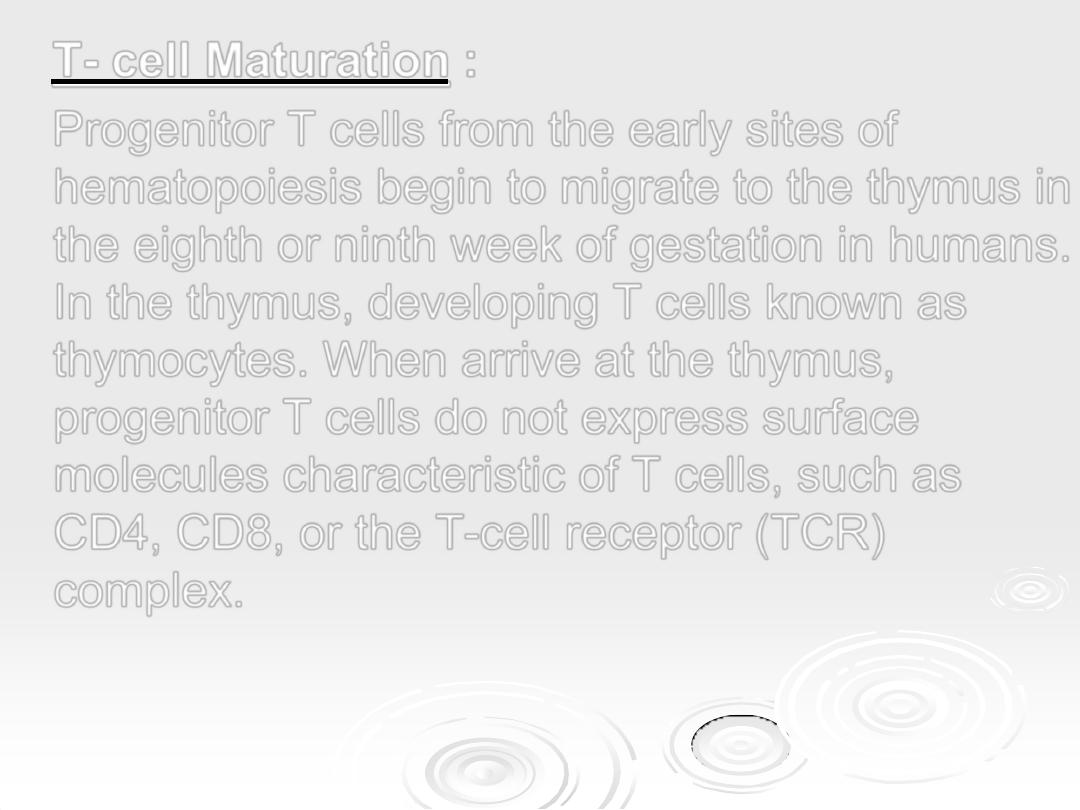
T- cell Maturation :
Progenitor T cells from the early sites of
hematopoiesis begin to migrate to the thymus in
the eighth or ninth week of gestation in humans.
In the thymus, developing T cells known as
thymocytes. When arrive at the thymus,
progenitor T cells do not express surface
molecules characteristic of T cells, such as
CD4, CD8, or the T-cell receptor (TCR)
complex.
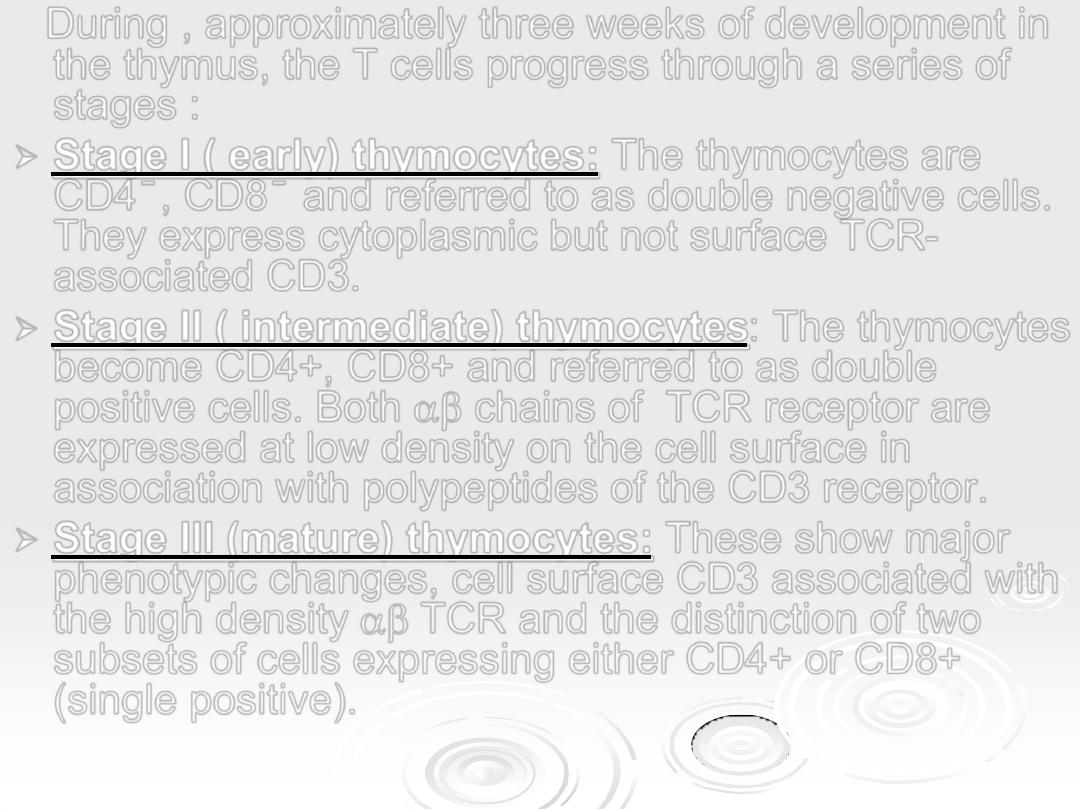
During , approximately three weeks of development in
the thymus, the T cells progress through a series of
stages :
Stage I ( early) thymocytes: The thymocytes are
CD4
̄ , CD8 ̄ and referred to as double negative cells.
They express cytoplasmic but not surface TCR-
associated CD3.
Stage II ( intermediate) thymocytes: The thymocytes
become CD4+, CD8+ and referred to as double
positive cells. Both
chains of TCR receptor are
expressed at low density on the cell surface in
association with polypeptides of the CD3 receptor.
Stage III (mature) thymocytes: These show major
phenotypic changes, cell surface CD3 associated with
the high density
TCR and the distinction of two
subsets of cells expressing either CD4+ or CD8+
(single positive).
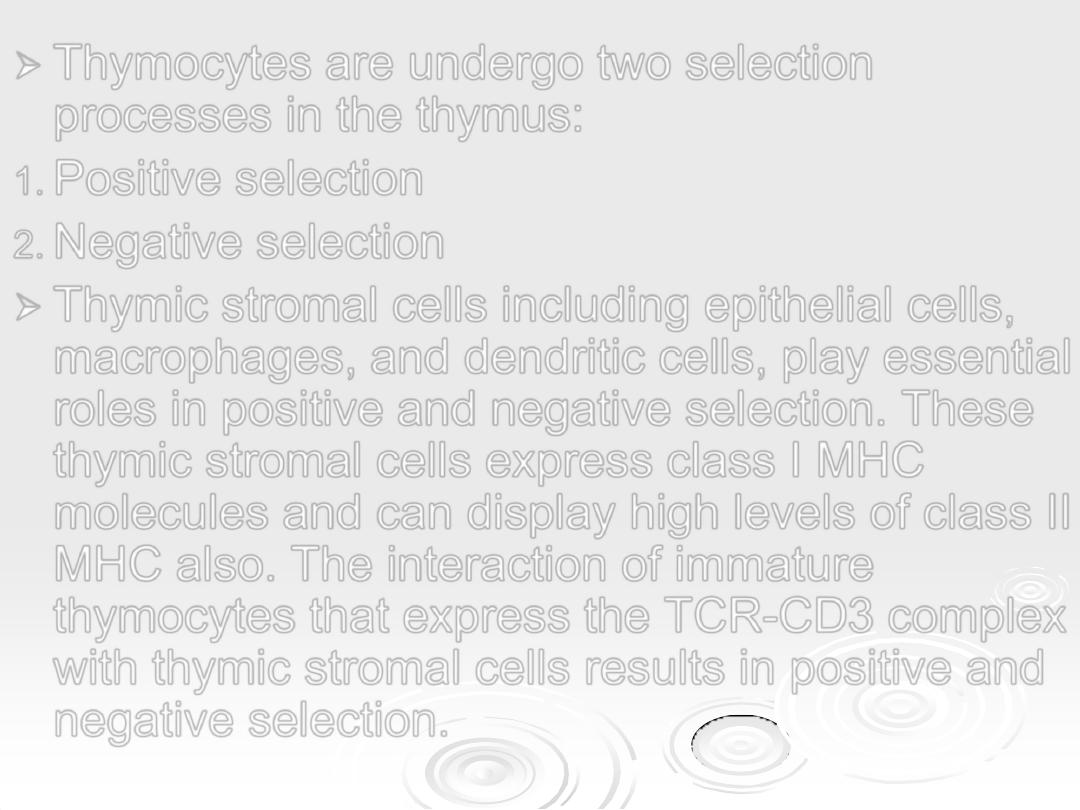
Thymocytes are undergo two selection
processes in the thymus:
1.
Positive selection
2.
Negative selection
Thymic stromal cells including epithelial cells,
macrophages, and dendritic cells, play essential
roles in positive and negative selection. These
thymic stromal cells express class I MHC
molecules and can display high levels of class II
MHC also. The interaction of immature
thymocytes that express the TCR-CD3 complex
with thymic stromal cells results in positive and
negative selection.
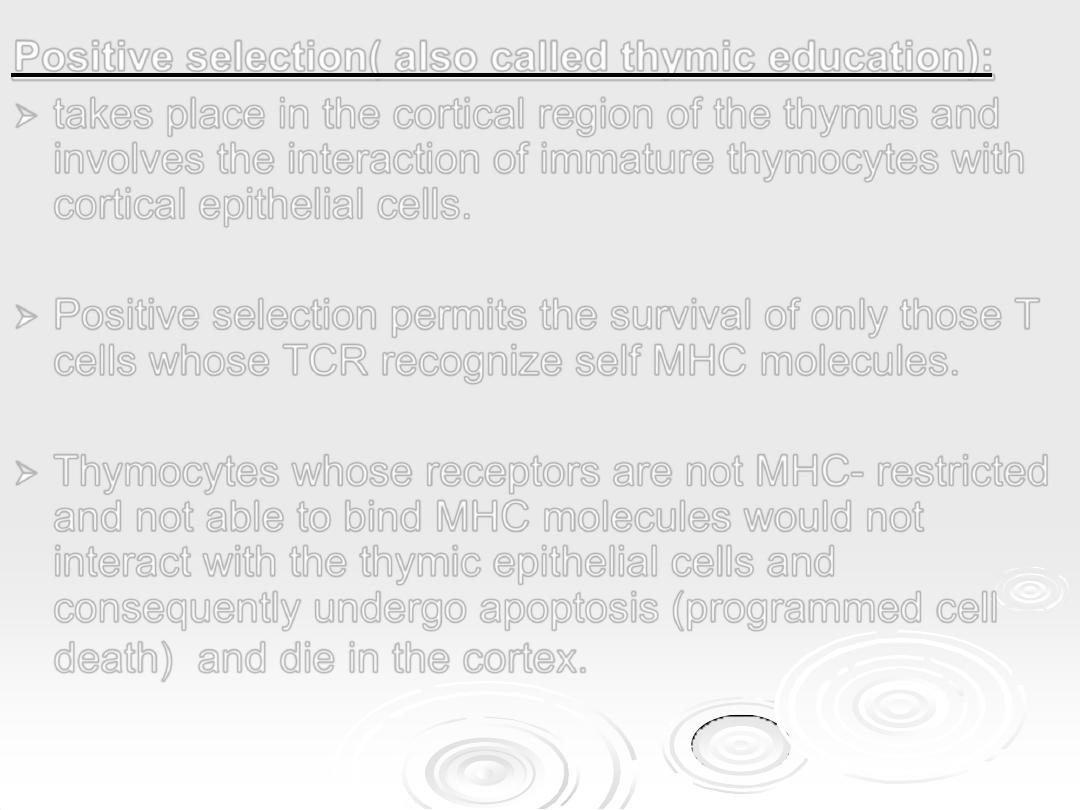
Positive selection( also called thymic education):
takes place in the cortical region of the thymus and
involves the interaction of immature thymocytes with
cortical epithelial cells.
Positive selection permits the survival of only those T
cells whose TCR recognize self MHC molecules.
Thymocytes whose receptors are not MHC- restricted
and not able to bind MHC molecules would not
interact with the thymic epithelial cells and
consequently undergo apoptosis (programmed cell
death)
and die in the cortex.
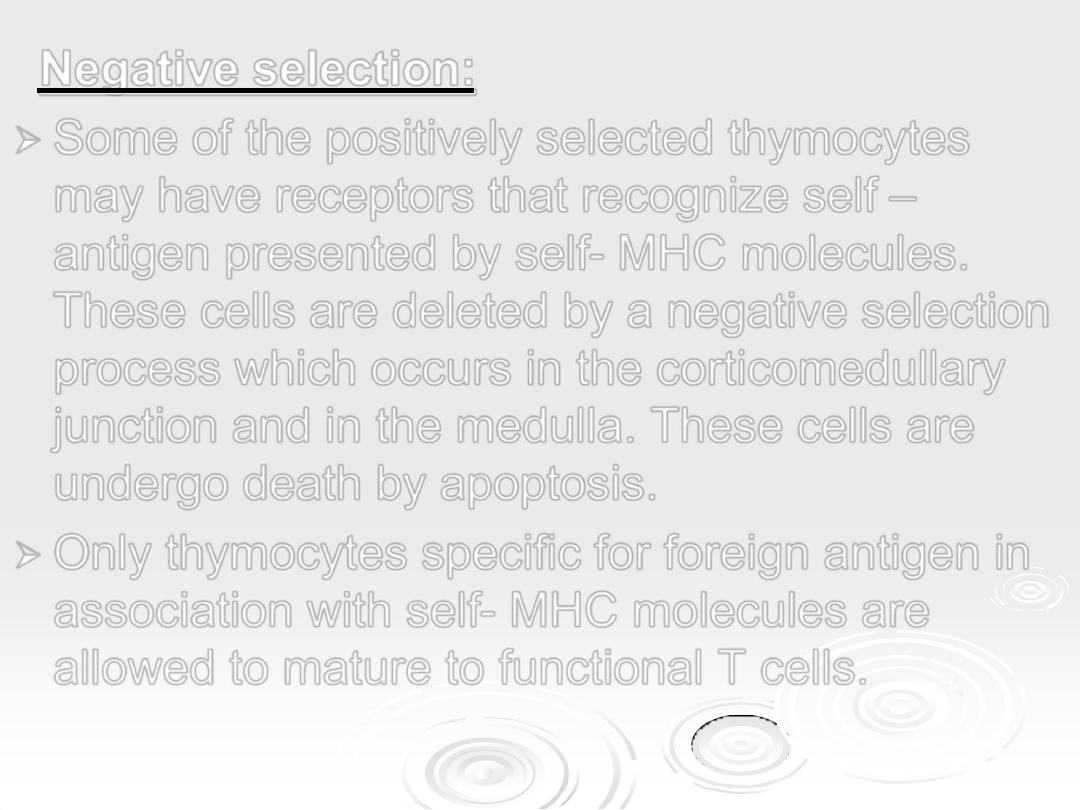
Negative selection:
Some of the positively selected thymocytes
may have receptors that recognize self
–
antigen presented by self- MHC molecules.
These cells are deleted by a negative selection
process which occurs in the corticomedullary
junction and in the medulla. These cells are
undergo death by apoptosis.
Only thymocytes specific for foreign antigen in
association with self- MHC molecules are
allowed to mature to functional T cells.

Less than 5% of thymocytes leave the thymus.
The rest die as the result of selection processes
or failure to undergo productive rearrangements
of TCR-gene.
CD4+ and CD8+ cells possess specialized
receptors (CD44) thought to be involved in
migration and homing to peripheral lymphoid
tissues. CD4+ and CD8+ cells exist to the T-
cell areas of the peripheral lymphoid tissues to
function as mature helper and cytotoxic T cells
respectively.

B-
cells Maturation:
Before birth, the yolk sac, fetal liver and fetal bone marrow
are the major site of B cell maturation; after birth,
generation of mature B cells occurs in the bone marrow.
B cell development begins as lymphoid stem cells
differentiated into the progenitor B cell (pro-B cell).
Proliferation and differentiation of pro-B cells into
precursor B cells (pre-B cells) requires the
microenvironment provided by the bone marrow stromal
cells.
The stromal cells play two important roles: they interact
directly with pro-B and pre-B cells, and they secrete various
cytokines, notably, IL-7, that support the developmental
process.
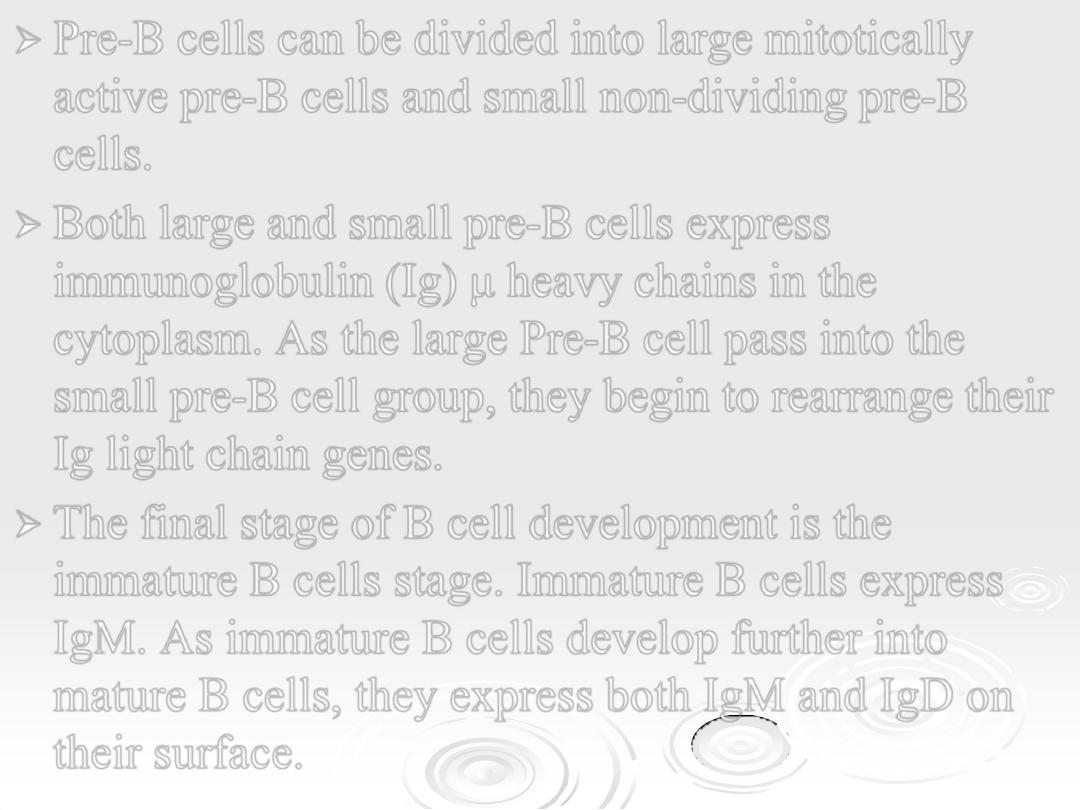
Pre-B cells can be divided into large mitotically
active pre-B cells and small non-dividing pre-B
cells.
Both large and small pre-B cells express
immunoglobulin (Ig) μ heavy chains in the
cytoplasm. As the large Pre-B cell pass into the
small pre-B cell group, they begin to rearrange their
Ig light chain genes.
The final stage of B cell development is the
immature B cells stage. Immature B cells express
IgM. As immature B cells develop further into
mature B cells, they express both IgM and IgD on
their surface.

It is estimated that the bone marrow produces about
5
×10
7
B cells/day but only about 10% are recruited
into the recirculating B cell pool. This means that
90% of the B cells produced each day die without
ever leaving the bone marrow. Some of this loss is
attributable to negative selection.
In bone marrow, there is negative selection against
any immature B cells expressing auto-antibodies on
their membranes because these antibodies react with
self antigen present on stromal cells leading to
crosslinking of the antibodies and subsequent death
of the immature B cells.
